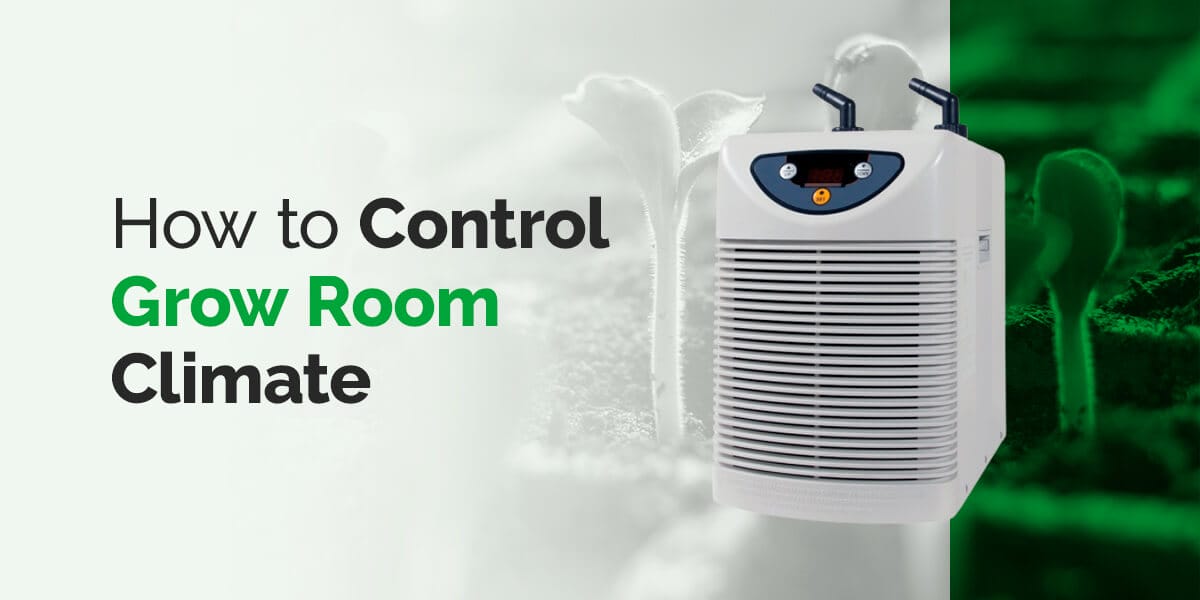By: HTG Supply Beltsville on 09/08/2017
Many gardeners are becoming more accustomed to growing and propagating clones. Clones provide a quicker route to assured yields by eliminating the guessing game when it comes to plant genetics and plant sex. The most assured way of growing healthy adults from Clones is by taking them from a healthy stock “mother plant”. Maintaining mother plants is also incredibly easy, with the focus being on monitoring and control, and a healthy mother plant can live for years if cared for properly.
Environment for Mothers
Although mother plants can be sustained in both hydroponic and soil/soilless mediums, it is typically better to use a soil/soilless environment due to ease of use when working with the lower strength nutrient regimens recommended for them. If using a soil/soilless environment it is best to use the largest container possible to prevent the Mother Plant from becoming root bound too early into their life cycle. A 20 gallon fabric grow pot filled with Premier Pro Mix HP is an excellent indoor mother plant container that can easily sustain a stock plant through multiple clone harvests. If you choose to sustain a mother plant in a hydroponic system it is best to provide preventative treatment for root-borne diseases that can plague older plants. H202 can be applied directly to your reservoir to kill many diseases as well as some insect eggs and larva. Temperature and humidity levels should be monitored and kept at levels consistent with those typically recommended for the plants you are cultivating. Airflow levels can be increased by directing fans at the mother plant, which can help develop better clones by producing stronger stems and promoting better nodal dispersion. The easiest way to control your mother’s environment is by using a grow tent like the HTG Silverback series. These tents allow the grower to fine tune the mother plant’s environment and control risk of disease or pests.
Mother Plant Lighting
Mother Plants need to be maintained with light periods long enough to keep them from going into their flowering/bloom phase. Long light periods are recommended, for many species an 18/6 (on/off) lighting schedule maintains vegetative growth. Although you can use LEDs or HIDs (HPS/CMH), it’s far more cost-effective to use CFLs or fluorescent lighting. A 4 foot 4 bulb T5 grow light provides an excellent light source for mother plants with a mere 212-watt draw. HTG Supply offers several fluorescent options to meet all space requirements. HTG Supply also offers an entire line of CFL bulbs in various spectrums that can improve nodal dispersion, resulting in greater numbers of superior clones.
Base Nutrients for Mother Plants
Although mother plants require nutrients to develop well, they do not use as much as is typical for flowering plants. Even a large mother can be sustained with as little as a quarter of the recommended dosage from most nutrient lines. A general misconception about mothers is that they require high nitrogen levels, but in reality, they require a broad-spectrum approach to produce superior clones. A good broad-spectrum nutrient like Bat Guano Company’s Super Tea, FloraNova Grow, House and Gardens Soil, Bio Canna / Canna Terra from Canna Nutrients, or Buddha Grow from Roots Organics can provide the foundation for your Mother and with a few minor amendments can drive superior Clone production.
Supplements & Amendments
The key to producing strong clones is healthy stem and nodal development, producing both vigorous candidates as well as strong nodal development. To produce strong stems and nodal development, an amendment that provides a hormonal boost is advised. The two hormones that play a role in this development are cytokines and auxins. Cytokines are plant hormones responsible for reducing internodal spacing, which results in a bushier plant with more clone candidates. Auxins are responsible for plant strength and rigidity, which helps clones grow to their maximum potential. There are many amendments available that contain cytokines and auxins typically derived from kelp and seaweed, such as MaxiCrop, Fox Farm’s BushDoctor, Atami B’Cuzz Foliar, Vegamatrix Hard-n-Quick, Nectar of the Gods Poiseidonzyme, Advanced Nutrients B-52 and Roots Organics Serene. A good rooting amendment can also be added to help promote a strong foundation for your growing mother, in turn producing a bushier plant with more clone sites. HTG Supply offers a wide range of rooting amendments such as House and Garden’s Roots Excelurator Gold, Atami Bloombastic, General Organics BioRoot, or Technaflora’s Root 66.
In addition to a nutrient amendment, you can also provide your mother plant with beneficial organisms to promote a robust root system. Mother plants appreciate beneficial organisms, which help your root system flourish by refining nutrients for easier uptake by your plants, keeping the rhizosphere clean by removing waste in your soil, and by inoculating against root-borne diseases that can plague older mother plants. HTG Supply offers many options including Great White, Orca, Mammoth P, Roots Organics’ Oregonism, and Advanced Nutrient’s Piranha, Tarantula, and Voodoo Juice.
General Care and Maintenance for Mother Plants
Mother plants require pruning/trimming to continually produce healthy clones. Damaged or unhealthy areas of the plant should be pruned regularly. Due to the value that some mother plants represent, it is also best to observe strict cleanliness standards and employ nitrile gloves if possible. In a soil environment, it is imperative that soil PH and EC levels be regularly monitored to prevent growth problems.
Related Videos:
Ask the Doc: 8 Site Cloning Bucket


